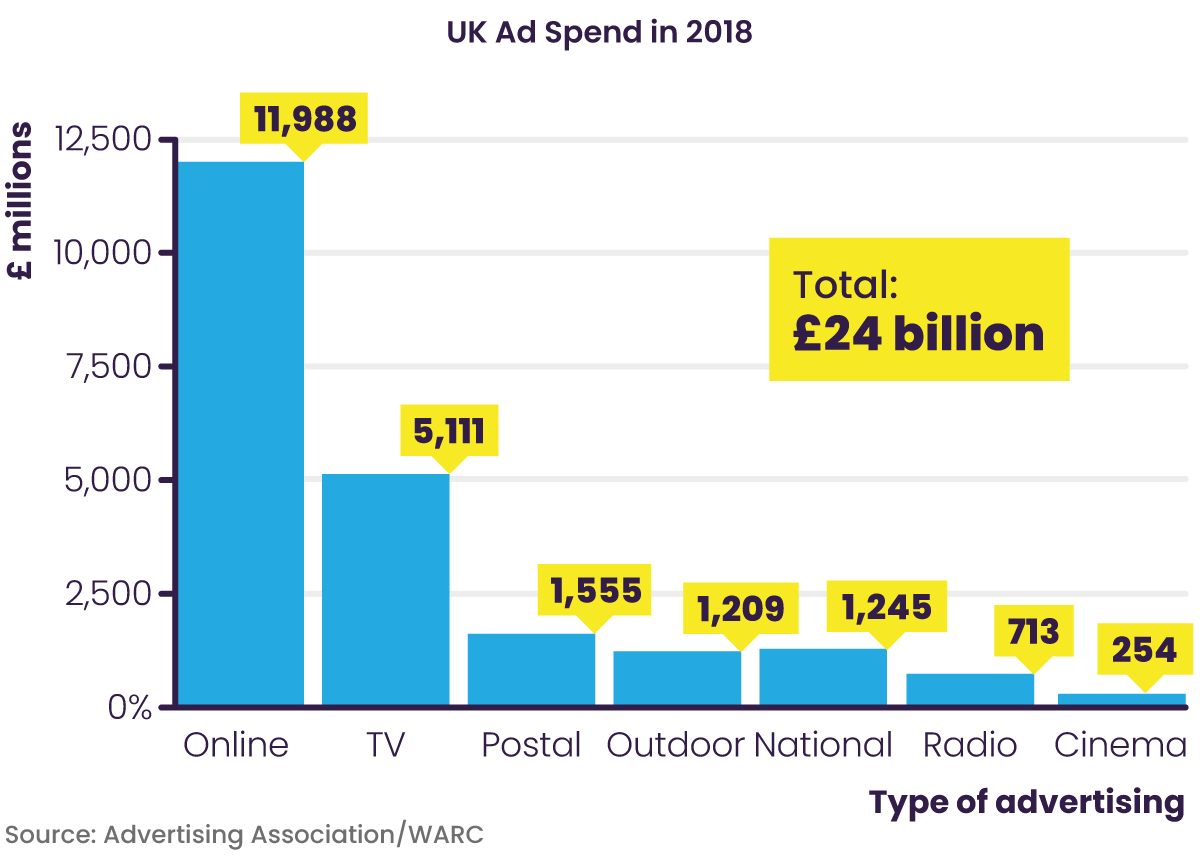
Where do we see advertising?
We are so surrounded by advertising that it can become oddly invisible. As a result advertisers shout louder and louder for our attention, using ever more clever techniques and digital media. Advertising is the cultural water in which we swim. It shapes our choices and wants, our priorities and what we consider to be ‘normal’ and part of the good life. More worryingly, research shows that we soak-up the messages and manipulations of marketing whether we are consciously aware of them or not.
Online advertising (measured by spend), including social media platforms like Facebook, has become the biggest advertising medium. Governments around the world are struggling to keep pace with new technologies. Regulation is running behind how our data is harvested, re-sold and used to target adverts at us. TV advertising continues to be key for big companies with sufficiently large advertising budgets.
Outdoor advertising such as giant billboards, digital screens, and panels placed at bus stops and other places for public transport, are particularly problematic because unlike other mediums, we have no choice over whether we view them or not. Unlike when you buy a magazine that you choose to read, adverts in the public domain are non-consensual intrusions.
What is ‘high- carbon’ advertising?
This toolkit looks at the ecological and climate impacts of advertising from these high carbon industries:
petrol and diesel car advertising, particularly for the largest and most polluting cars such as Sports Utility Vehicles (SUVs)
airline advertising for flights
fossil fuel companies (such as Shell and BP)
While the Badvertising campaign essentially focuses on the climate damage done by advertising high carbon goods and activities, the ad industry has a track record of criticism for its negative impacts on health and wellbeing, for portraying people in discriminatory ways, and promoting out-of-date attitudes. Health campaigners have been fighting for decades to strengthen regulations on tobacco, alcohol, gambling and junk food advertising. Feminist and equality movements critique the role of marketing in idealising certain body shapes or skin tones - and confront the industry’s attacks on self esteem and mental health.
Similarly, experts on wellbeing argue that the constant pressure to purchase and consume ‘must-have’ brands undermines mental health and promotes attitudes and values that make us feel worse (For more on this see Tim Kasser’s book The High Price of Materialism .



